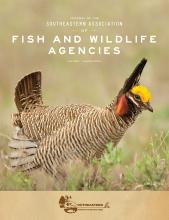Comparison of Diploid and Triploid Largemouth Bass Growth and Maturation in Puerto Rico
Triploid largemouth bass may have potential in sport fish management and in food fish production as a means to eliminate reproduction, which would, in turn, potentially increase somatic growth. To examine this potential, four cohorts of diploid and triploid largemouth bass were produced over a 10 - yr period and tagged intramuscularly with coded wire tags. Bass were stocked into Lucchetti Reservoir, Puerto Rico, and recaptured during subsequent sampling events. Growth rates, condition (relative weight, Wr), and reproductive investment (gonadosomatic index, GSI) were compared for...
